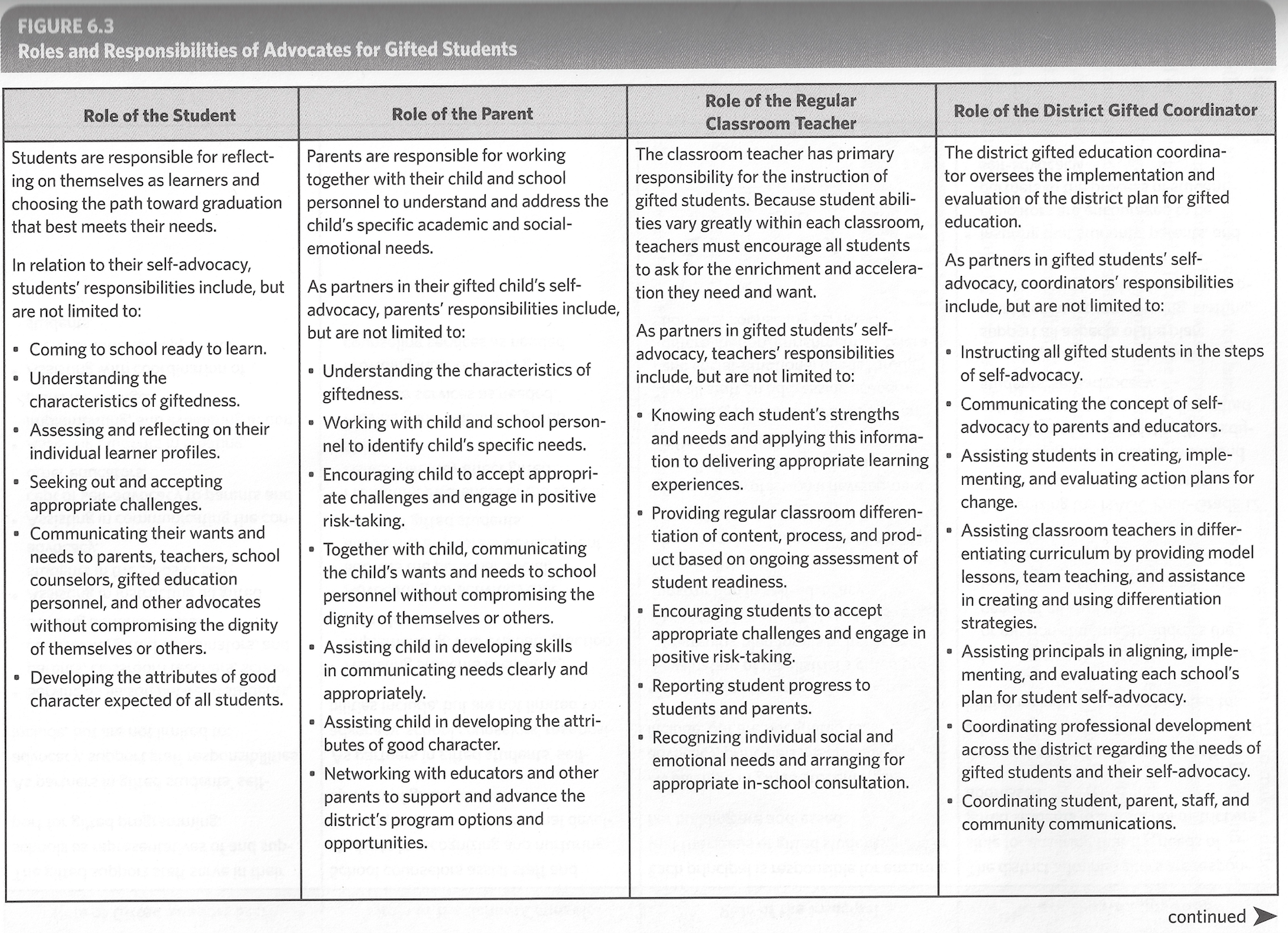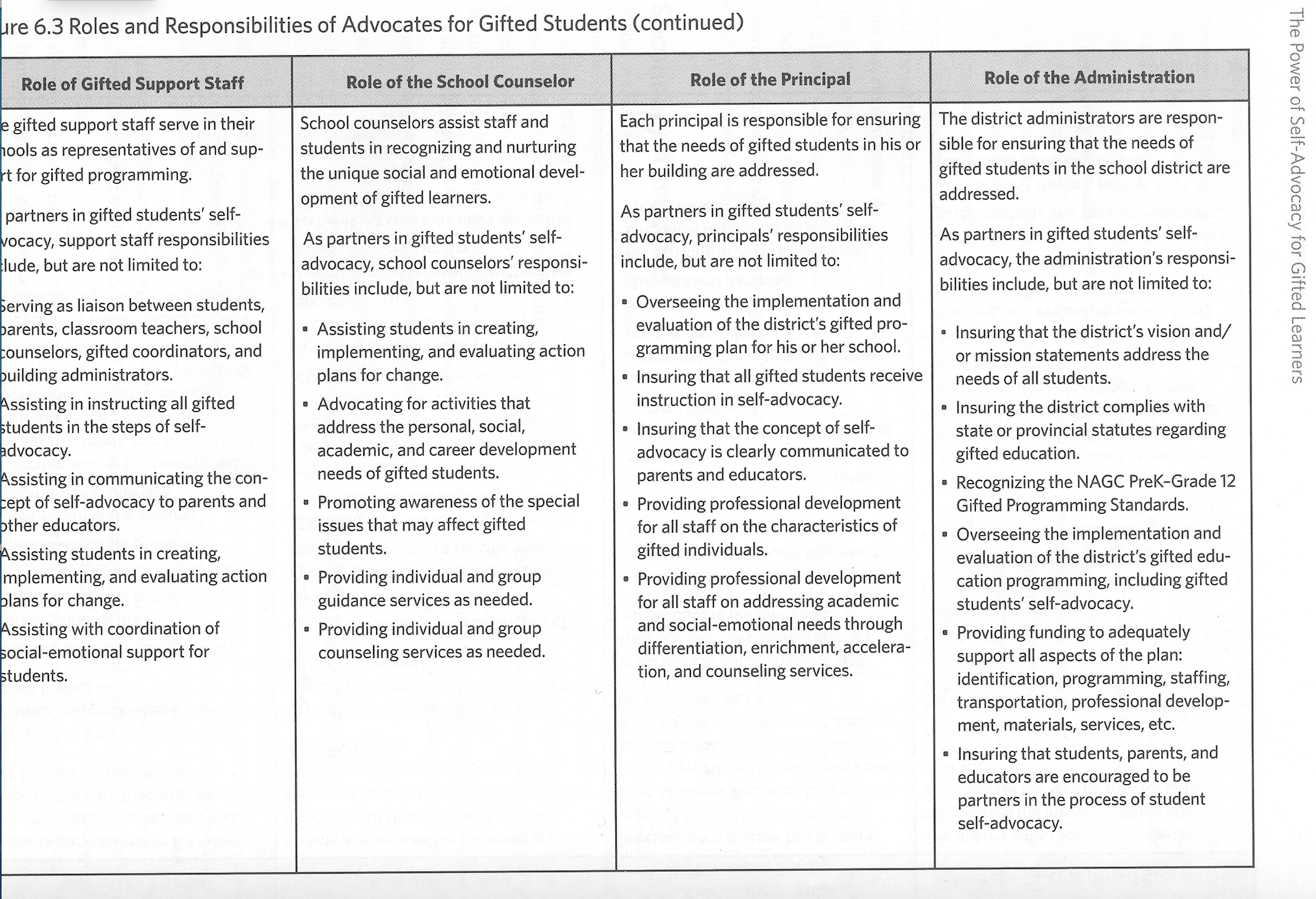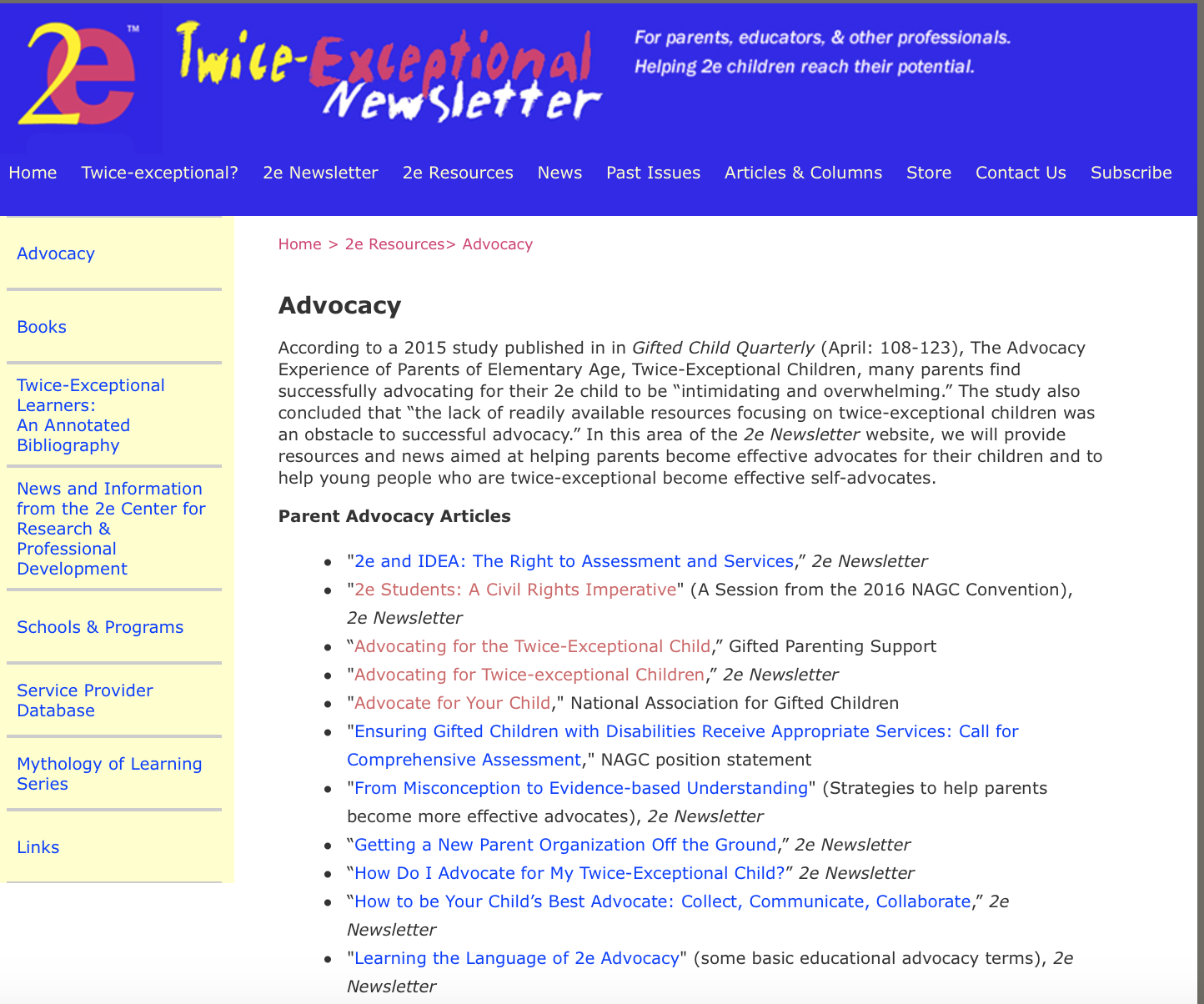Lesson 4: Looking Beyond the Academics
Advocacy
As you advocate for your students or your own child, remember to include your child in the process as much as possible (GTLD Network). Teach your child to be able to state:
- Who I am! (Strengths and Weaknesses)
- What I Need! (Adaptations and Accommodations)
- These Tools Work For Me! (Interventions and Strategies)
- This is How I Get What I Need to Succeed! (Communication Skills)
We need to learn and teach advocacy skills--it does not just comes naturally. Fortunately there is an incredible resource for educators that provides a step-by-step approach for supporting students.
Deb Douglas has a passion for empowering her students. Her website provides a user-friendly resource for advocacy as is her book The Power of Self-Advocacy for Gifted Learners in which she provides a comprehensive look at all the elements to be considered as well as lesson plans and assessments to support parents, teachers, students, and administrators. The following steps for self-advocacy in her book include:
- Students understand their rights and responsibilities. This includes understanding giftedness and how it relates to their unique selves and an appropriately challenging education. As gifted individuals, students are responsible for: Taking charge of their own educations and developing personal characteristics that support success.
- Students develop their learner profiles which includes cognitive functioning, learning strengths, interests, learning preferences and personality characteristics and traits. Throughout the book she has several assessments to measure these items.
- Students investigate available options and opportunities which involves investigating the options and matching those options to the individual.
- Students connect with advocates
We must also be advocates for this at-risk group of learners.
The following charts outline the roles/responsibilities of advocates for gifted students:


The Power of Self-Advocacy for Gifted Learners by Deb Douglas (2017) Free Spirit Publishing Inc.
The Twice-exceptional Newsletter (now 2e News) published the following issue with several links about advocating for twice exceptional students: Advocacy. Although many of these links are geared toward parents, they are helpful to educators as well.

CAGT Advocacy Toolkit
The Colorado Association for Gifted and Talented Advocacy Toolkit is a great resource. CAGT also has a dedicated group of CAGT Affiliates who are “the boots on the ground” that support connections, in particular with parents, across the state. Affiliates respond to questions, provide resources, and assist in problem solving at the local level. CAGT strives to collect feedback from Affiliates to inform implementation of effective policies and to support Affiliates in their efforts to coach families and others in positive advocacy. Check their website to find affiliates in your area.
For additional resources and ideas regarding teaching children self-determination skills such as self-advocacy and self-awareness, visit: